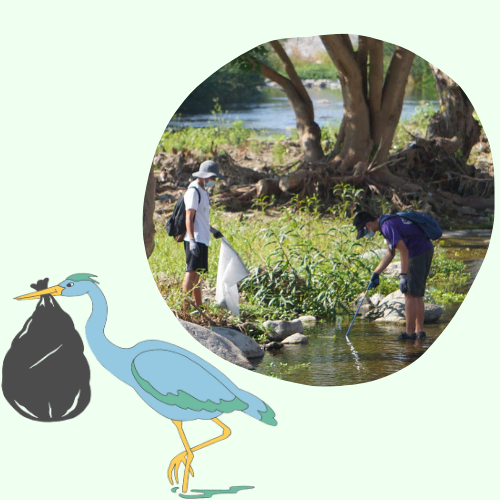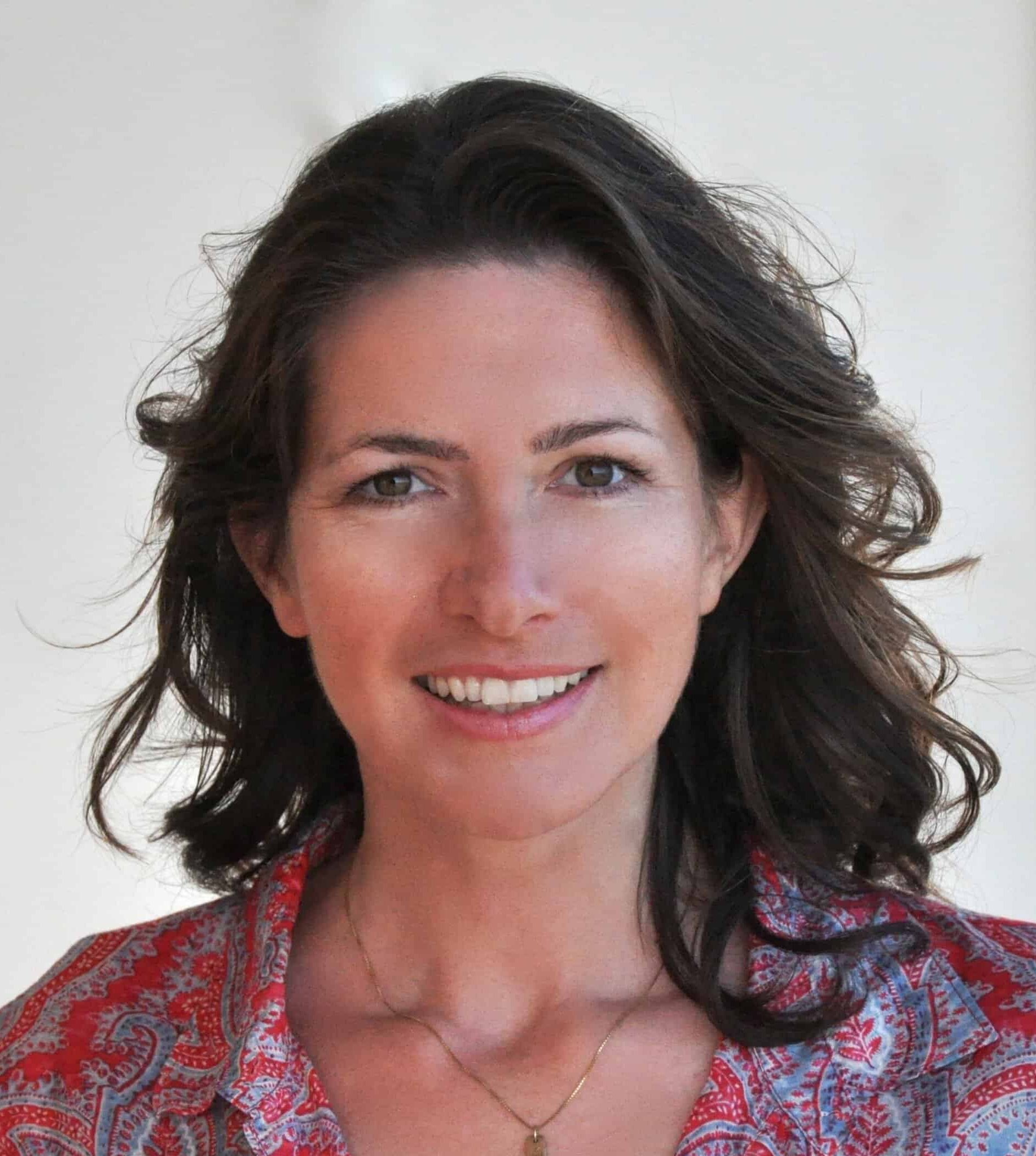

Waterline is an ongoing series that explores the solutions making rivers, waterways and ocean food chains healthier. It is funded by a grant from the Walton Family Foundation.
If the Los Angeles River were a living being, we’d call her a survivor.
From her headwaters in the Simi Hills and Santa Susana Mountains, her 51 miles wind through one of the most densely populated regions of the country and then flow straight down into the Pacific Ocean near Long Beach. The City of Angels owes its existence to her; over 1,000 years ago, the Tongva established the first settlement on her banks near where Los Angeles City Hall stands today. However, she is now forced to swallow urban discharge and runoff from farms, factories and millions of residents. Ever since devastating floods in the 1930s, most of her body has been imprisoned in a straitjacket of concrete, often polluted by big-city trash such as rusty shopping carts and plastic bags. Yet there are still a few areas where the Los Angeles River is allowed to show her original beauty and meander more naturally.
One can glimpse that beauty in the Sepulveda Basin, a 2,000-acre flood management basin in the San Fernando Valley, squeezed between two major traffic arteries, the 101 and the 405. This is one of the few stretches where the milky blue-green water has been allowed to keep its naturally sandy basin, framed by oaks, cottonwoods and sycamores that provide shade in a park-starved city.
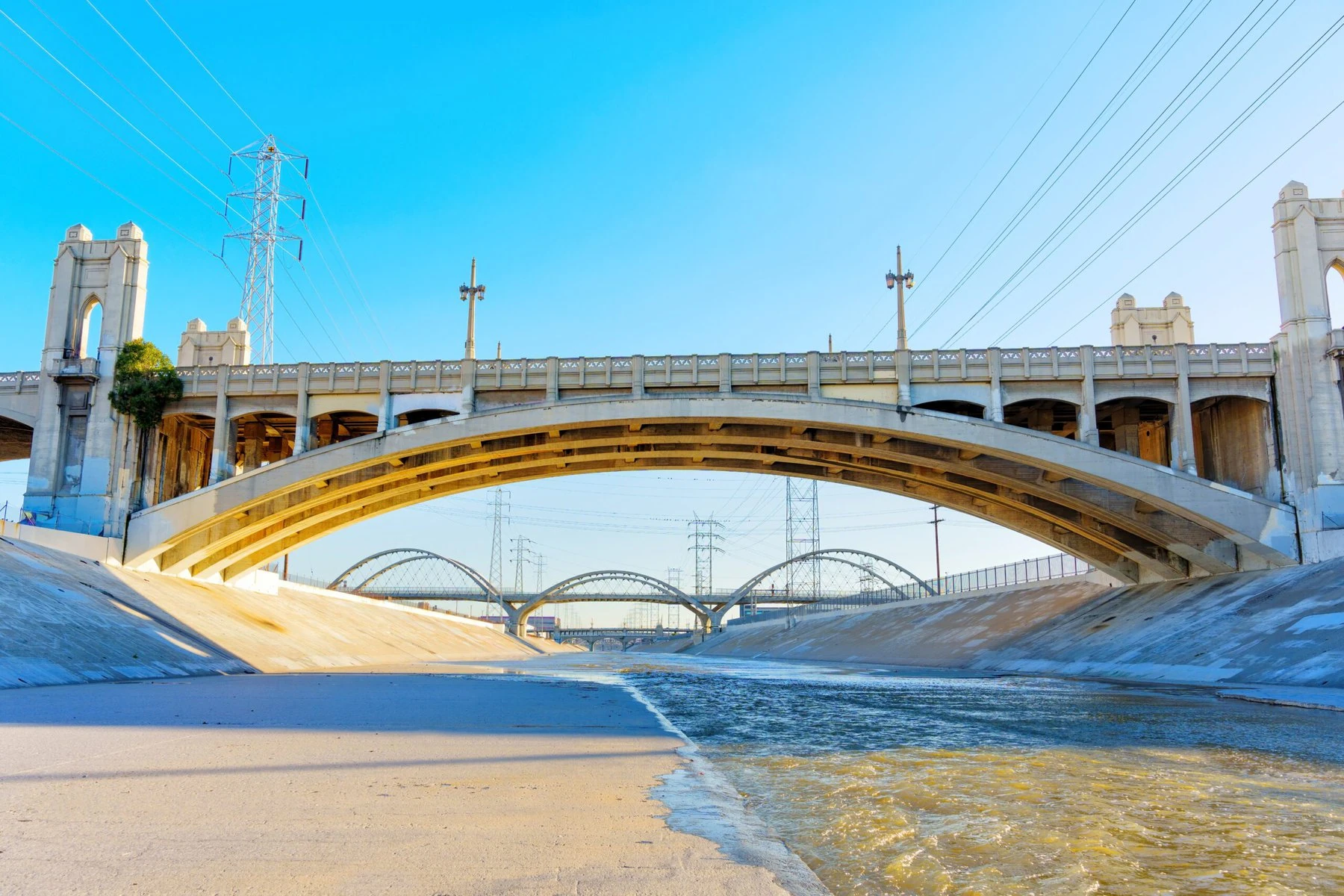
Melanie Winter has been kayaking here for many years — even before it became legal in 2011 — to show reporters and citizens “what our river actually looks like and how she functions.” Winter has been instrumental in organizing the removal of invasive plants along the half-mile stretch, including 180 trees, to restore native habitat and improve water quality. She has spent the last two and a half decades advocating for the re-naturalization of the LA River. If Winter had her will, most of the river would be freed to look like the Sepulveda Basin: meandering between native trees and shrubs, with white egrets picking their lunch from the sandy riverbanks.
“We could solve several problems at once,” Winter says in her energetic voice. “For starters, we are park-poor to such an extent [that] it has as much of a negative impact on public health as the housing deficit.” In the San Fernando Valley, neighborhoods lack open green spaces, with only 0.2 acres of park per 1,000 people in Van Nuys and Sherman Oaks — significantly below the LA County goal of four acres per 1,000 people. But despite all her efforts over the past 25 years, Winter must acknowledge, “We have not removed a foot of concrete anywhere in the Los Angeles River.”
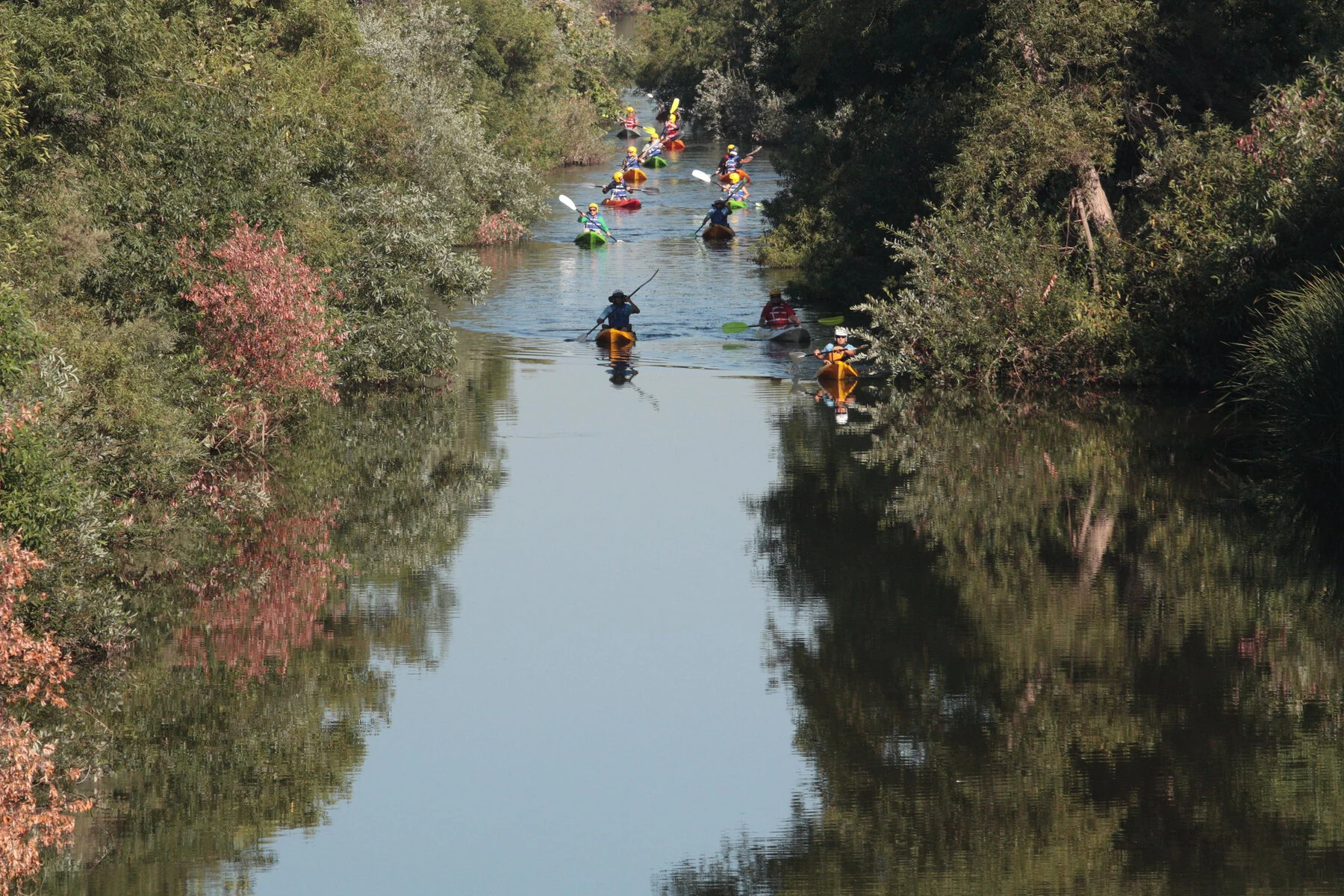
The river has become a hotbed of dreams and expensive plans, including a $20 billion “LA River Master Plan” the county designed with the help of renowned Pritzker Prize-winning architect Frank Gehry. The 2022 plan boasts an ambitious $150 million 85,000-square-foot cultural center on the river’s bank, along with bike paths, green belts, and a 42-acre park. What it doesn’t call for is any removal of concrete. On the contrary, Gehry envisions “elevated platform parks” on massive stilts and bridges atop the river, raising the river walls between eight and 12 feet, using even more hulking concrete and steel. He states that he investigated possibilities for removing the river’s concrete bed but couldn’t overcome the flood risk to the dense neighborhoods and urban development in close proximity.
Weighed down by negative news?
Our smart, bright, weekly newsletter is the uplift you’ve been looking for.Winter calls the plans “completely insane.” She argues, “[The city and county’s] solution has always been big engineering projects. Hardly anybody doubts that entombing the river in concrete was a terrible idea, and adding more concrete is a heavy greenhouse emitter itself.” Other environmental groups, including Friends of the Los Angeles River (FoLAR), Heal the Bay and the Nature Conservancy, also protested, complaining to the city in a letter that the proposal would do “particular ecological harm.”
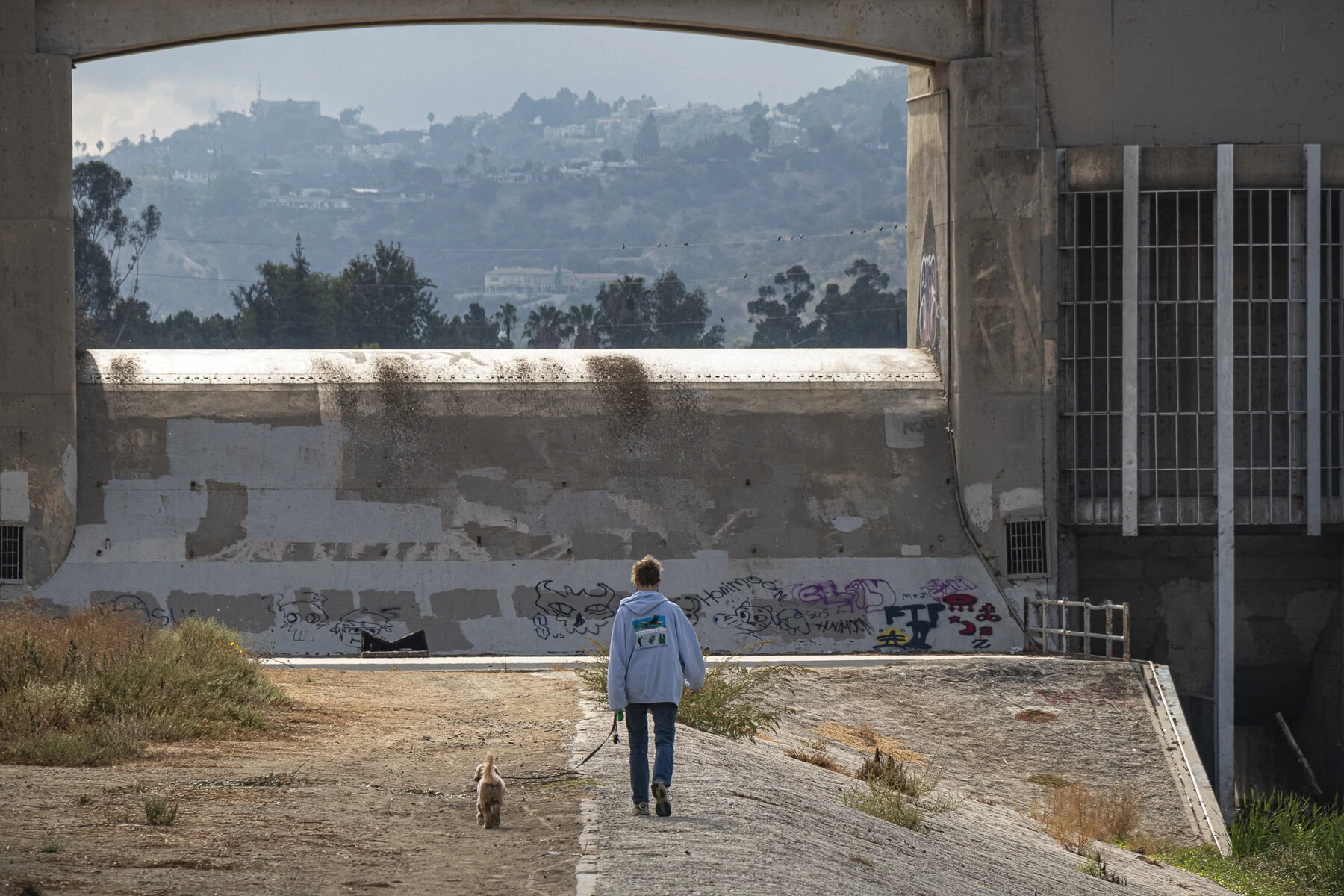
As an alternative, Winter calls for “an inclusive, integrated watershed approach,” which includes restoring the ecosystems of the watersheds that feed the river, such as the Arroyo Calabasas at the river’s origin, the Tujunga Wash near Burbank, and the Rio Hondo between Downey and South Gate. Winter’s detailed ideas, which she underscored with feasibility studies, include a “road diet, with less land devoted to moving and parking cars, as well as transforming the city’s staggering amount of concrete into open spaces with permeable surfaces.” The core of her vision lies in restoring natural riverine areas wherever possible to boost biodiversity and climate resiliency, reduce flood risk and recharge groundwater. “I think of the river as an asset, not a storm drain,” she says.
Winter refers to this approach as “multisolving,” a term she borrows from climate change researcher Elizabeth Sawin. Solving the river’s problems could also help solve LA’s park deficit, boost local water supplies, mitigate heat problems because green and blue spaces lower temperatures, and consequently alleviate negative impacts on public health.
When discussing the future of the LA River, it is essential to understand that this body of water is the property and playground of multiple agencies, including 14 cities and municipalities, the Army Corps of Engineers (USACE) and the Los Angeles County Flood Control District (LACFCD). City officials, engineers, residents, scientists and activists have been fighting over her for decades. The river is dividing the city, literally and metaphorically. What could be a boon is instead a scar.
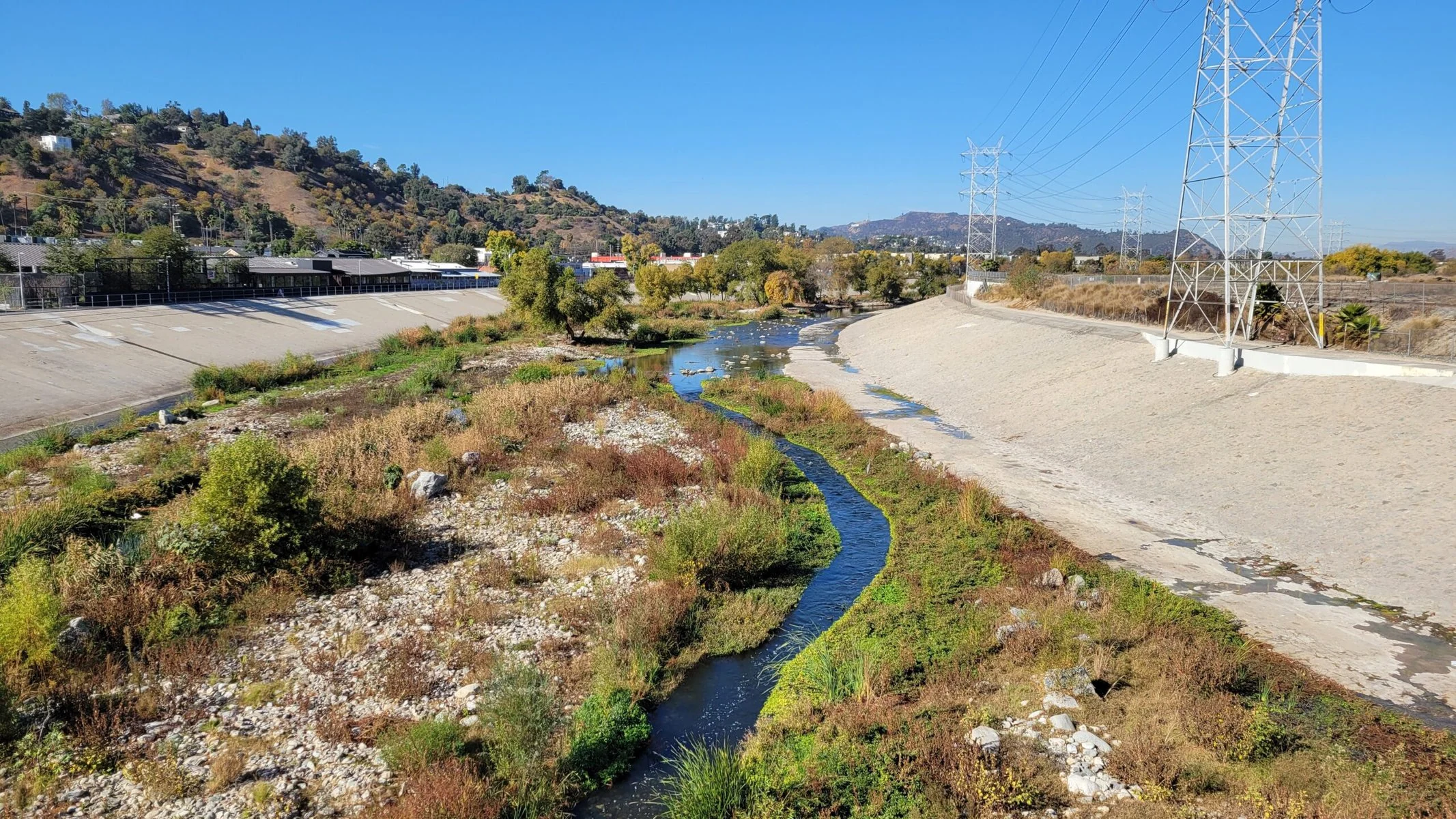
One could compare the debate over the best treatment to the arguments between surgeons, first responders and holistic healers. Should Taylor Yard, one of the last remaining undeveloped riverbank spaces, sport “something iconic for the 2028 Olympics,” as City officials have announced, or rather become a much-needed oasis of relaxation and relief for wildlife and humans?
Past plans for such oases haven’t made it far. For instance, in 2013, the Army Corps of Engineers recommended a $453 million plan to restore nearly 600 acres of wildlife habitat along the river to revitalize the river’s ecosystem. However, the plan was never funded, the fate of many ambitious and costly plans in Los Angeles.
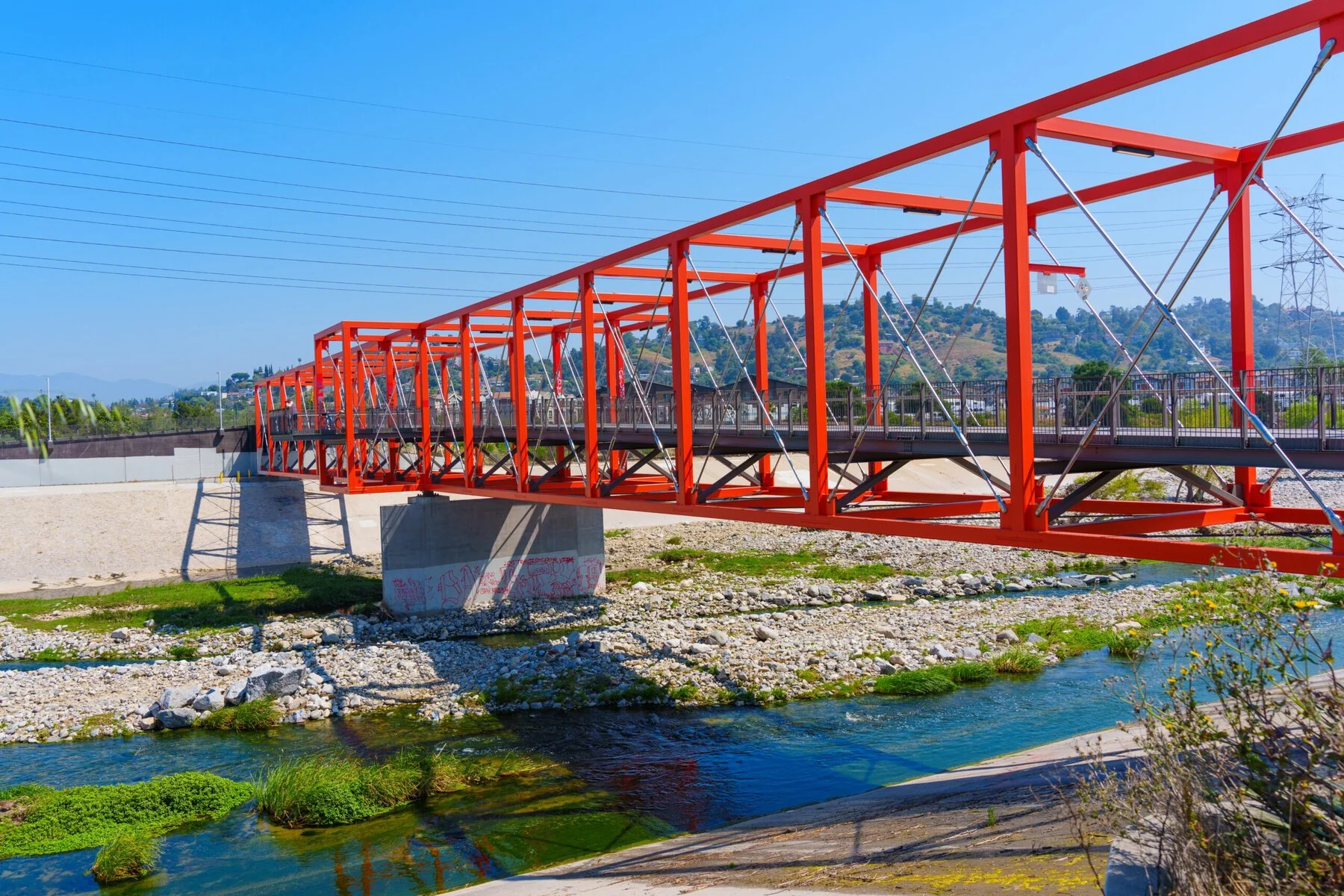
It is worth listening to Winter, as she not only knows the water’s history and problems intimately, but has actively been working to improve the river’s health. In order to facilitate the removal of the concrete prison, Winter has implemented what she calls “urban acupuncture,” targeted initiatives at some of the watershed’s crucial pressure points.
For instance, she has been collaborating with residential neighborhoods in the San Fernando Valley and South LA to retrofit parcels with rain tanks, permeable paving, stormwater-catching basins and native plants, transforming these spaces for water capture, conservation and reuse. The publicly funded Water LA Initiative, launched with the help of the Coastal Conservancy and the State Department of Water Resources, retrofitted 22 such residential parcels as part of a case study. As Winter explains, the report found that the retrofitted homes “reduce water use by an average of 25 percent, provide 18,175 square feet of native plants and trees for habitat, shade, air quality enhancements, and in a year with average rainfall, capture and treat an estimated 1.2 million gallons of water” — thereby improving the water quality of the river, all at an average cost of $5,200 per homeowner. Winter is eager to demonstrate that these small-scale solutions can scale up, are better for the environment and cheaper than the large engineering projects favored by city officials.
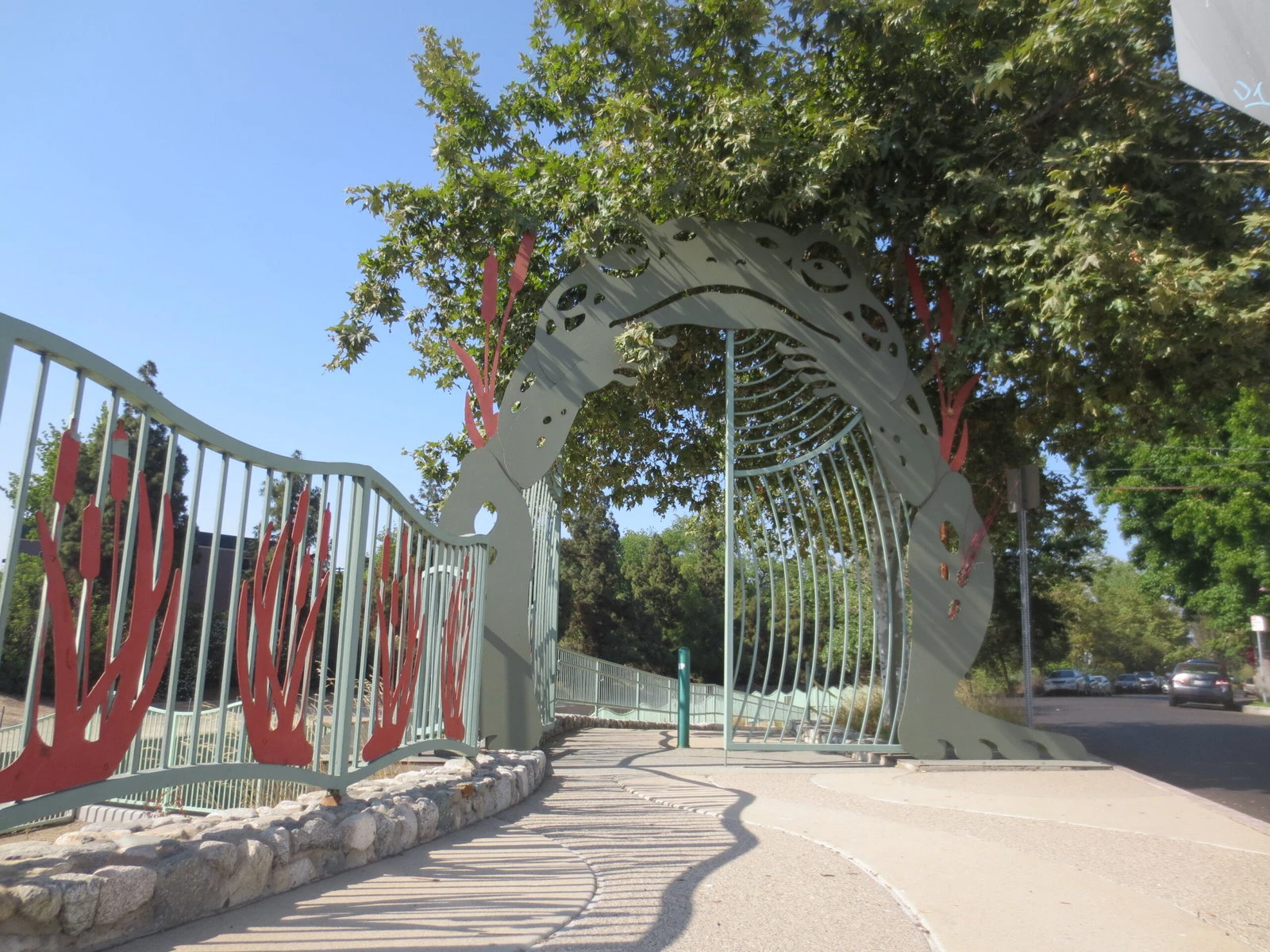
Most of the year, the river carries so little water that Hollywood was able to film iconic car chases for Grease, Batman and Terminator 2 in the concrete Neverland. But during winter storms, the river can surge rapidly, overwhelming the concrete barriers and necessitating emergency rescues. Since much of California is battling a prolonged drought, Winter questions “how smart it is to keep the river’s concrete bed, which was basically built with the sole intent to speed stormwater out of the city into the ocean as quickly as possible.”
A former Hollywood actress and Broadway dancer, Winter fell in love with the river when she took a job with FoLAR in 1996, organizing the annual river cleanup that yields up to 60 tons of trash. When environmental advocate Dorothy Green introduced her to the concept of watershed management, Winter found her calling. In 2000, she founded her own nonprofit, The River Project, advocating for a more holistic approach. She soon sued the city over its plan to commercially develop Taylor Yard — a former feed mill turned rail yard — and won. Organizing a coalition of local groups that secured the land and $45 million in state funds, she was the driving force behind creating the LA River’s largest park: the 240-acre El Rio de Los Angeles State Park opened in 2007.
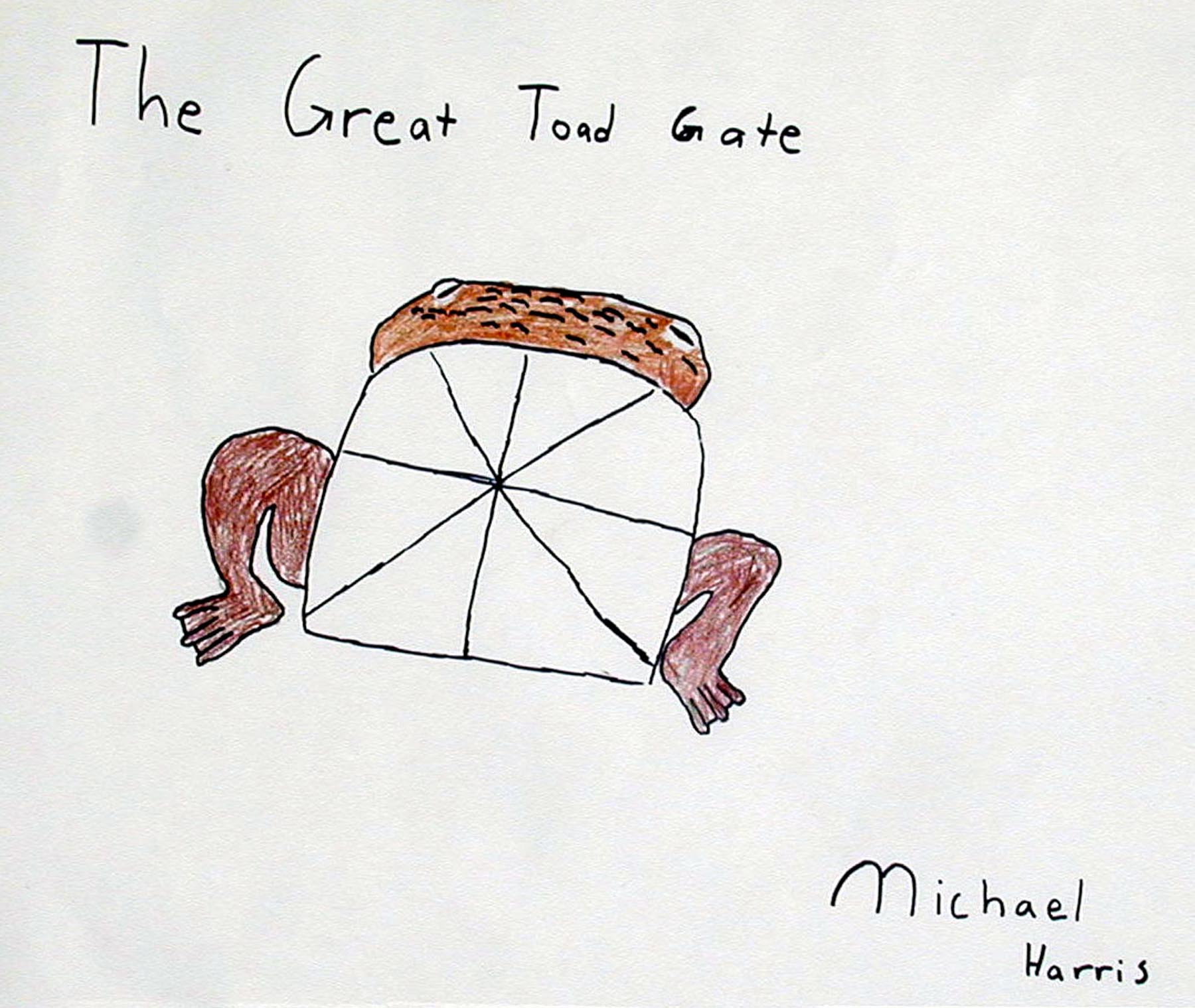
“That was worth all the blood, sweat and tears,” she says. Her home in Studio City overlooks one of the many river projects she initiated, the Valleyheart Greenway, realized with the help of elementary school children who helped create playful artsy elements such as the Great Toad Gate, the Butterfly Bench, Snake Wall, Hummingbird Gardens and the Story Fence.
She is not the only one who dreams of “how different Los Angeles would look today if architects in the 1930s had adopted the Olmsted-Bartholomew Plan,” which envisioned the river as an “emerald necklace,” nourishing not just the water needs but also the souls of Angelenos. Until the 1930s, the river still carried native Chinook salmon and rainbow trout that have since disappeared.
Melanie Winter’s time is running out. A year ago, she was diagnosed with lung cancer, and her doctor predicted she might have only one or two more years to live.
She will spend them fighting for the river, for her vision of “a living river.”





